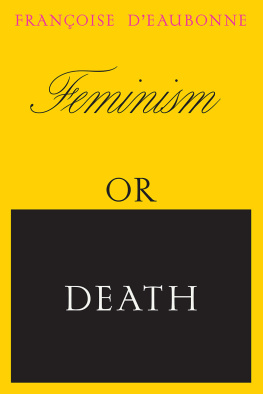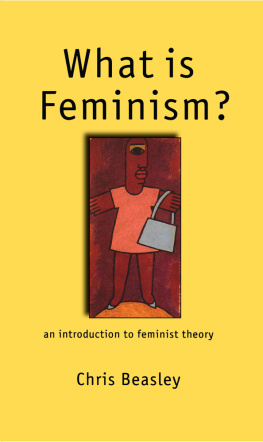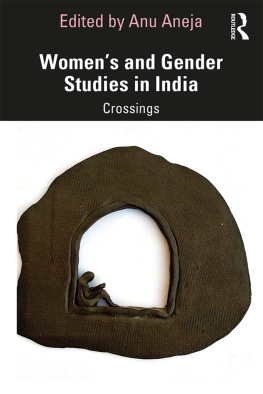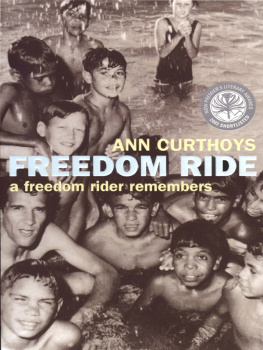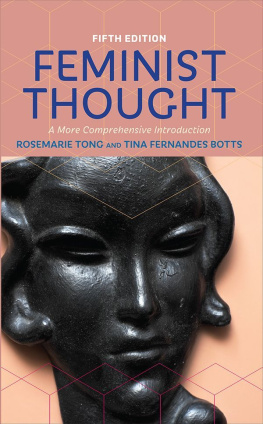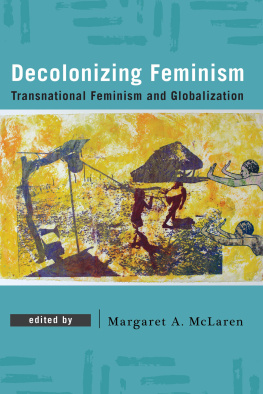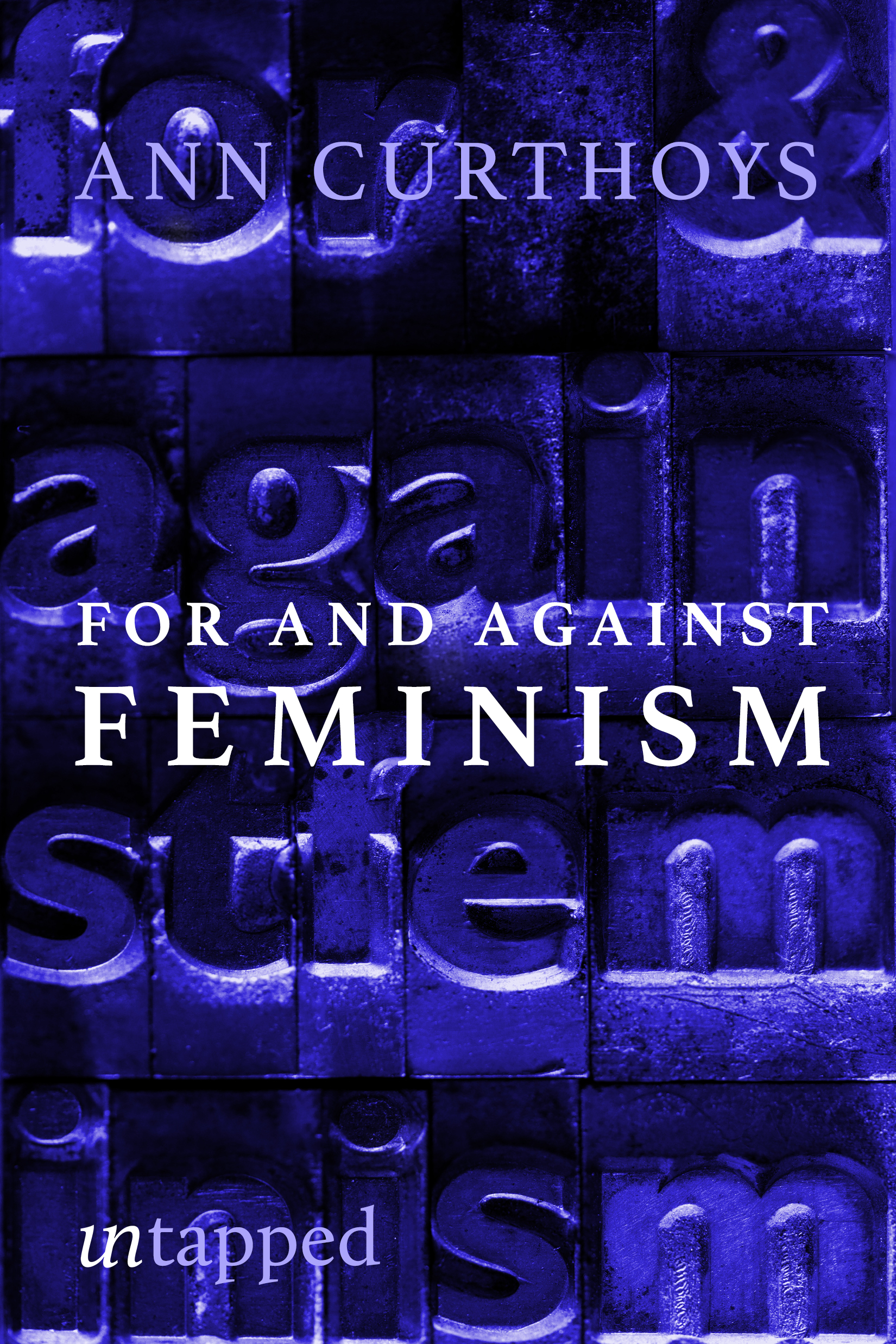ANN CURTHOYS
FOR AND AGAINST
FEMINISM
A personal journey into feminist theory and history

Introduction to Digital Edition
It gives me great pleasure to see this book, published in 1988 and out of print since 1990, reissued in digital form. The feminism it addresses, exemplifies, and critiques is not only a continuing force both in Australia and worldwide but is experiencing something of a resurgence. It is important for people encountering feminist ideas for the first time, and for anyone taking feminist ideas seriously, to understand its history. As I outline in this book, when my generation first engaged with feminism in the early 1970s, we thought we were the first feminists ever, that we were doing something entirely new. We soon learnt that while the particular kind of feminism we were espousing, which we called Womens Liberation, was indeed new, it was also part of a much longer history, stretching back for centuries. More than fifty years since the opening essay in this book was first published, I believe more strongly than ever that knowing our feminist history is vitally important for engaging with the present and envisaging a different future.
The idea of collecting these essays, written between 1970 and 1986, into a book was first suggested to me by the late Gunther Kress in 1987. I was a senior lecturer in the Faculty of Humanities at the New South Wales Institute of Technology, soon to become the University of Technology, Sydney, and Gunther was the facultys Dean. As I remember, I commented to Gunther that many of the essays I had written had not reached a wide audience and he said, well, put them together into a book, and then see what happens. People will either like it or they wont, but it will be out there. So that is what I did, collecting together essays that had appeared in small journals or in edited collections, plus a few previously unpublished essays. I was inspired, too, by Gloria Steinems collection of her earlier essays in a book, Outrageous Acts and Everyday Rebellions (1983), in which she introduced the essays as a whole and gave the dates of their first publication, starting with the famous I was a Playboy Bunny in 1963. I added the idea of introducing each essay separately, explaining the context in which it was written and its place of first publication. My publisher, the late John Iremonger, who was such a force at Allen and Unwin during the 1980s, encouraged me all along the way.
I came to the Womens Liberation movement with a background in student radicalism and an interest in the history of race relations and colonialism in Australia. In 1965, when a student at the University of Sydney, I had been a participant in the Australian Freedom Ride which had been inspired in part by freedom rides in the US a few years earlier which had challenged racial segregation. Led by Charles Perkins, an Arrernte and Kalkadoon man, we students travelled by bus through New South Wales, demonstrating against and drawing attention to racial discrimination against Aboriginal people. In 1970, when I went to my first Womens Liberation meeting, I was half way through a PhD thesis on race relations in New South Wales, investigating racism towards Indigenous peoples and Chinese immigrants in the nineteenth century. During the years I was writing about feminist theory and history, I was also writing essays, drawn from my thesis, about race relations in Australian history. This background is important, I think, for the essays collected in this book, as I came to an interest in feminist questions after my earlier engagements with questions of race and class. I was also part of the New Left, and considered myself a socialist attracted to Marxism, though, as this book makes clear, there were popular versions of Marxism I did not support.
I have just now read the book myself for the first time for many years; while I have occasionally needed to refer to particular essays, I have not actually read the book as a whole since its initial publication by Allen and Unwin in 1988. I am struck by how accurate its title is; this is truly both a committed feminist text and a strong critique of many aspects of feminism as I knew it in Australia in the 1970s and 1980s. I do remember some friends criticising the title what is the against doing there?, they complained but as readers of this edition will find, there is a strong critique of middle-class feminism for what I saw as its lack of attention, when thinking about questions of gender, to the salience of both class and race. There is a persistent emphasis on class throughout the book, and several essays Damned Whores and Gods Police, The emergence of a feminist labour History, Radical feminism, Colonial womens history, and Postcolonialism, ethnic identity and gender also address questions of race and colonisation.
Indeed, I see my book now as a kind of prequel to the concept of intersectionality, which the year after the book was published was named and developed by African American legal theorist, Kimberl Crenshaw. In her foundational essays, Crenshaw emphasised that her work built on earlier politics and theorizing within black feminism, and looking back now, we can see how through the 1980s feminists in many different locations internationally were wrestling with the question of how class, gender, and race and ethnicity were connected. My own interest in these issues continued and intensified, expressed most clearly, perhaps, in an essay entitled The Three Body Problem: Feminism and Chaos Theory, which appeared in the Australian feminist journal, Hecate, in 1991.
Some aspects of the book surprise me. While we now associate feminist scholarship intimately with the term gender, I do not use it until a brief mention in 1977 and not systematically until 1982. I had forgotten how attached I was to Marxism, not the structural Marxism associated with the French theorist, Louis Althusser, fashionable at the time, but the Marxism concerned with class relations, the Marxism of the historian, E.P. Thompson. In essay after essay, I worried over the connection between class-based power relations and gender relations, and especially over the connections between the family as a social institution and the wider economy, specifically capitalism.
Gunther Kress was right to suggest collecting the essays into a book would help me mark the end of a particular body of work and enable me to move on to other projects. During the same year as this book appeared, I published one more essay on the question of women, work, and the family, and that was Equal Pay, a Family Wage, or Both? Feminists and Trade Unionists in Australia since 1945. Then I let it go and worked on a range of other subjects including histories of Australian feminism, the anti-war movement, the establishment of Australian television, popular culture, twentieth century journalism, the Freedom Ride, and much else. My interest in the relationship between race, class, and gender continued and indeed continues still in the context of a current project, with Cath Kevin and Zora Simic, on the history of the complex issue of domestic and family violence.
It is not surprising that a book well over 30 years old, which includes essays more than 50 years old, alludes to, thanks, praises, criticises, and quotes people who have since passed away. Those I knew, some very well, include Jeannie Martin, Kay Daniels, Pat Troy, Gunther Kress, Kate Jennings, and Edna Ryan; those I knew only through their work included Kate Millett, Shulamith Firestone, Margaret Benston, and Veronica Beechey. It is sobering to realise that at the time these essays were written all these people were all very much alive and contributing to the ferment around feminism of the 1970s and 1980s. Thankfully, their work continues to outlive them and we can learn from it still.



